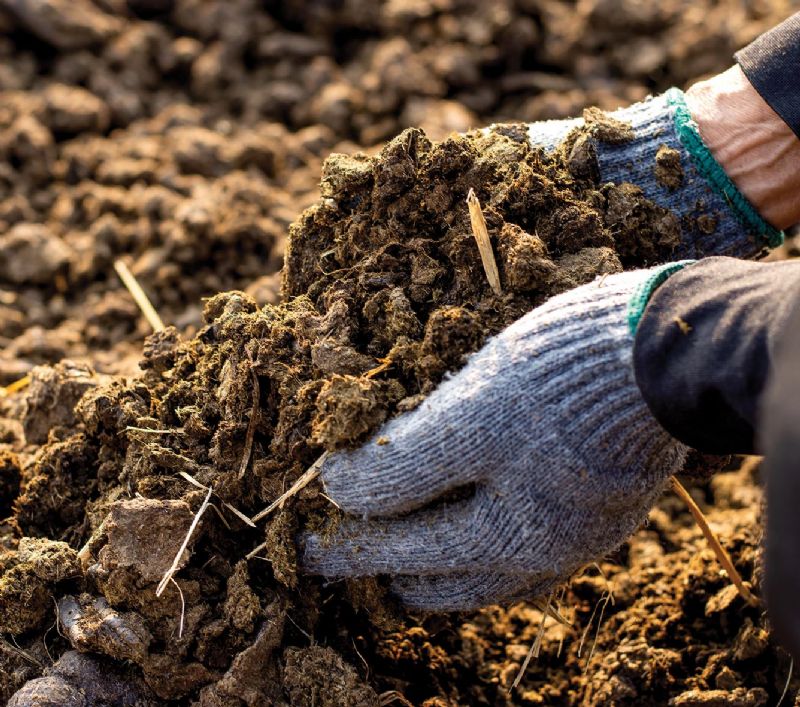- Home
- News, Articles & Reviews
We are hiring! Please click here to join our growing magazine delivery team in Gloucestershire!
Areas
Homes & Gardens
Archive

Plan for the year ahead
All Areas > Homes & Gardens > In the Garden
Author: Daniel Hoggins, Posted: Monday, 18th December 2023, 09:00
Among the new year’s wild, windy and undoubtedly rather wet weather, January, at its best, is cold, crisp and clear and there are plenty of reasons to get out into the garden to enjoy the fresh air.
This month is the ideal time to mulch your beds and borders. Adding a layer of well-rotted manure or compost is a great way to boost soil health and feed your plants. It also suppresses weeds and helps retain moisture content in the garden. I like to cover all bare earth with a mulch of about four inches thick.
Shredded Christmas trees make good mulch
Doing this now while the ground is clear of perennials and before the spring bulbs start to fully emerge means you don’t have to worry so much about damaging the plants. However, do remember to leave a gap around the stems of any plants in your garden, as they are at risk of rotting if wet earth is pushed up too close. If you’ve got a surplus Christmas tree and a shredder, this makes a good garden mulch, too.
Avoid being too tidy in your outdoor space – don’t clear away all the dead leaves, as these make perfect shelters for bugs, beetles and even queen bees. Instead of cutting and clearing all your dead perennial growth into the compost bin, consider making nature piles.
Nature piles will be of great value to lots of garden creatures
These are simply mounds of sticks, hedge cuttings, old foliage and grass clippings. They can be made out of sight or at the back of a border, but wherever and whenever you make one, rest assured that they will be of great value to a host of creatures in your garden. Insects, toads, voles and hedgehogs can all call a nature pile a home.
Another important job for the garden that you can do from the warmth of your home is to plan the vegetable patch and order some seeds for the coming year. It is advisable, where possible, to rotate the sort of vegetables you grow each year from plot to plot. For example, a patch where legumes such as peas and beans are grown one year is followed by brassicas such as broccoli, sprouts and cabbages the next. The following year, you plant potatoes in the same space, then these are replaced by onions and root vegetables such as carrots, beetroot and radishes the following year.
Crop rotation helps soil to stay healthy
The benefit of crop rotation is that different groups of plants suffer from specific pests and moving them to new soil each year reduces the risk of attack. Different plants also extract specific nutrients from the soil, while others replenish them, so crop rotation aims to ensure the soil stays healthy and your plants taste delicious.Other Images
Copyright © 2024 The Local Answer Limited.
Unauthorized use and/or duplication of this material without express and written permission from this site's author and/or owner is strictly prohibited. Excerpts and links may be used, provided that full and clear credit is given to The Local Answer Limited and thelocalanswer.co.uk with appropriate and specific direction to the original content.More articles you may be interested in...


© 2024 The Local Answer Limited - Registered in England and Wales - Company No. 06929408
Unit H, Churchill Industrial Estate, Churchill Road, Leckhampton, Cheltenham, GL53 7EG - VAT Registration No. 975613000You are leaving the TLA website...
You are now leaving the TLA website and are going to a website that is not operated by us. The Local Answer are not responsible for the content or availability of linked sites, and cannot accept liability if the linked site has been compromised and contains unsuitable images or other content. If you wish to proceed, please click the "Continue" button below:




